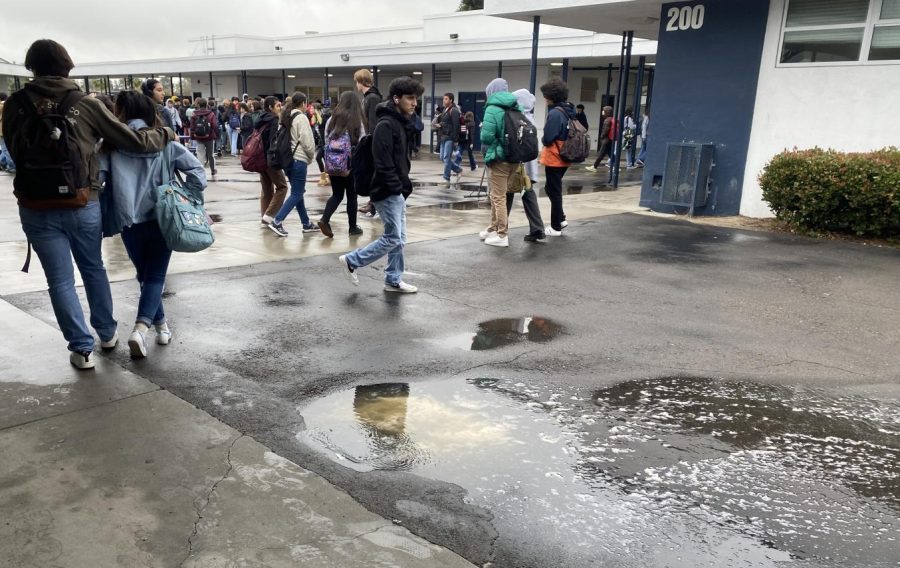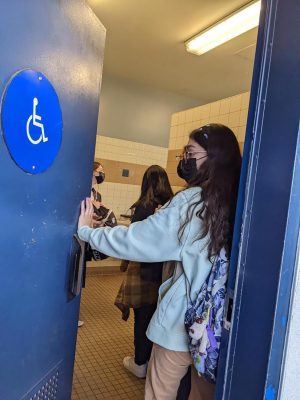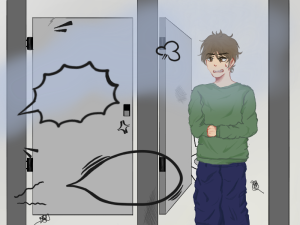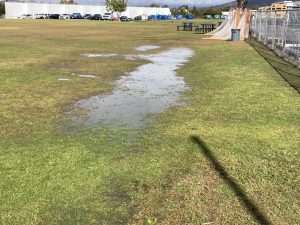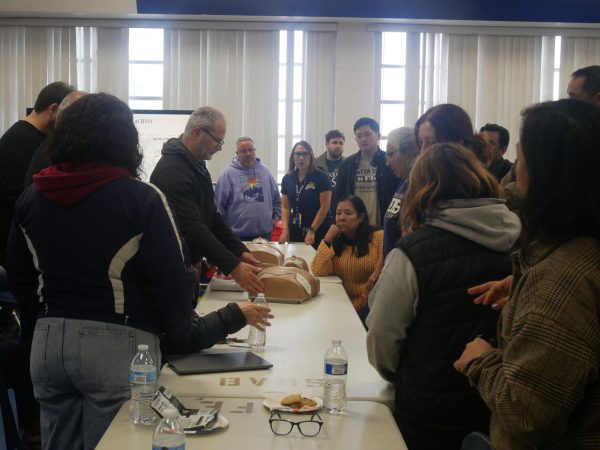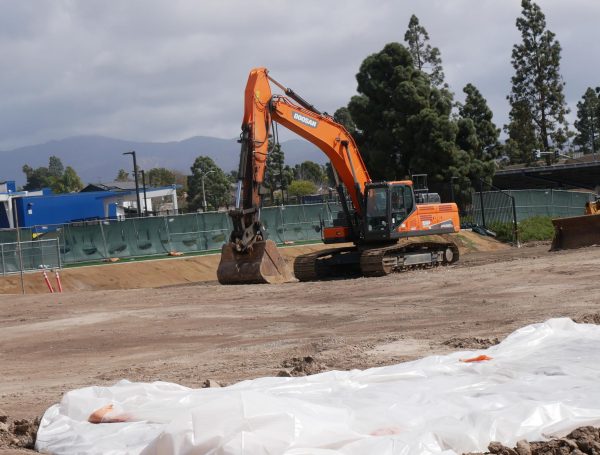Rainy conditions unearth concerns at BVH
On Mar. 15, sewage began to overfill the sewage drains outside the 300s girls’ restroom. The excessive rain caused this sewage to overflow and spread throughout the Bonita Vista High campus.
Recent rainy weather conditions during the end of March have worsened Bonita Vista High (BVH)’s restroom sanitation and caused flooding. As sanitation deteriorates in these facilities, students and staff face a health hazard. These conditions have sparked debate on whether the rain is the culprit or whether these are previously unattended issues.
“I use the bathroom everyday and it’s sometimes gross in there. The urinals will be overflowing, sometimes with urine, and the smell is awful,” Senior Leonardo Monroe, a frequent user of BVH restrooms said. “I think the health hazard would be the urinals overflowing because it spills on the floor.”
BVH Forensics and Biology teacher Joseph Szakovits has also been affected by these conditions as his classroom is next to the 300 restrooms. He notes that bathroom cleanliness has always been a problem.
Looking back to when he attended BVH, Szakovits would actively avoid using them as he “would not feel comfortable with the smell and general conditions of them.” He adds that the way BVH handles the situation sends a clear message to the community.
“If we allow these conditions to be normalized, that sends a message to the students about how much we care, and it’s not a message that we want to send,” Szakovits said. “Whether it’s our intention or not these conditions do make a statement to our community and that’s something we need to keep in mind.”
Moreover, campus security Oscar Paniagua says that students are at the root of the issue when it comes to the restroom cleanliness, regardless of weather conditions. He believes that students should take care of their facilities better. This includes not emptying the soap dispensers which creates an inconvenience for other students.
“They [janitors] clean up every single day but there are so many students that don’t take care of the stalls,” Paniagua said. “The students use it [restrooms] a lot. They don’t flush, I bring it to their attention but they don’t listen.”
Szakovits shares his point of view on the belief that students are the ones responsible for these conditions. He explains that though this may be the case, as a community there has to be a combined effort to not normalize these conditions.
“There’s plenty of responsibility to go around. When I bring up the concerns, what is often said is: ‘we have students that are creating problems.’ Then it becomes an issue of accountability, something about the culture here that needs to change,” Szakovits said.
The debate has been whether heavy rains or irresponsible students are to blame for the condition of the restrooms. Regardless of what the case may be, the issue still stands that the restrooms have become a hazardous space. Monroe expresses his concerns on how the rain affects the sanitation outside of the restrooms.
“I have seen the vents overflow but I only see it when it rains. When that does happen it smells like sewage,” Monroe said.
While he has also noticed this, Szakovits claims that the flooding outside during rainy conditions is a separate issue. He says that even though rain can worsen conditions for restrooms it is inevitable for flooding to not occur with the way the school ground is currently laid out.
“There’s only so much we can do about that [the flooding]. Unfortunately a lot of that is simply the ground that the school was built on,” Szakovits said. “Everywhere you see a little dip, the water is going to collect and unfortunately if that’s near the doorway to a bathroom, that happens.”
Similarly to Szakovits, Paniagua noticed the flooding around campus. He argues that the distinct ground levels are the culprit, specifically the flooding around the poles in the hallways. After construction of the ground six years ago, BVH became more prone to flooding.
“The floor has a second layer that goes up, the water was not collecting before they put in the second layer, but now there are so many puddles because the ground is uneven,” Paniagua said.
Overall, Szakovits understands that the flooding issues “need to be solved at a district level.” He encourages the BVH community to reflect on the taking care of their facility to not normalize unsanitary conditions.
“There’s some things we can do about it and some things we can’t. Collectively as a school, the staff, it’s our responsibility to have that culture where these things are not normalized.” Szakovits said.

I am a senior this 2022-2023 school year at Bonita Vista High and a first year Features Editor for the Crusader. Although I have always loved writing,...

I am a senior at Bonita Vista High and this year's Editor at Large for the Crusader. This is my fourth year on staff, last year being an Arts and Cultures...

